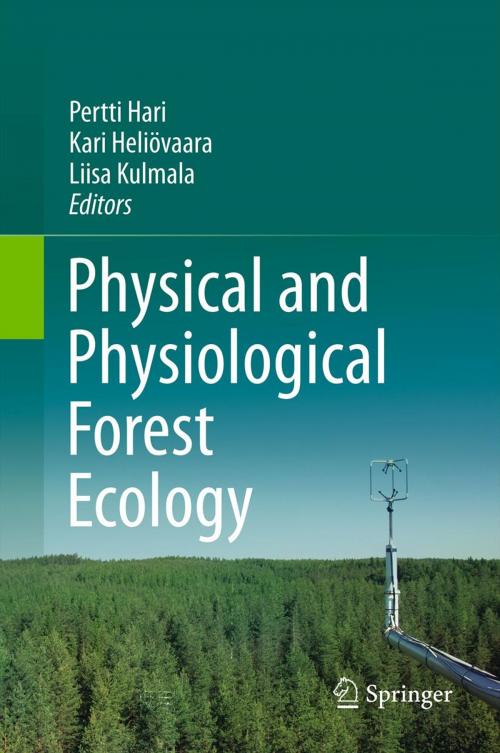Physical and Physiological Forest Ecology
Nonfiction, Science & Nature, Science, Biological Sciences, Ecology, Environmental Science, Nature| Author: | ISBN: | 9789400756038 | |
| Publisher: | Springer Netherlands | Publication: | December 24, 2012 |
| Imprint: | Springer | Language: | English |
| Author: | |
| ISBN: | 9789400756038 |
| Publisher: | Springer Netherlands |
| Publication: | December 24, 2012 |
| Imprint: | Springer |
| Language: | English |
This book introduces a holistic synthesis of carbon and nitrogen fluxes in forest ecosystems from cell to stand level during the lifetime of trees. Establishing that metabolism and physical phenomena give rise to concentration, pressure and temperature differences that generate the material and energy fluxes between living organisms and their environment. The editors and authors utilize physiological, physical and anatomical background information to formulate theoretical ideas dealing with the effects of the environment and the state of enzymes, membrane pumps and pigments on metabolism. The emergent properties play an important role in the transitions from detailed to more aggregate levels in the ecosystem. Conservation of mass and energy allow the construction of dynamic models of carbon and nitrogen fluxes and pools at various levels in the hierarchy of forest ecosystems.
This book introduces a holistic synthesis of carbon and nitrogen fluxes in forest ecosystems from cell to stand level during the lifetime of trees. Establishing that metabolism and physical phenomena give rise to concentration, pressure and temperature differences that generate the material and energy fluxes between living organisms and their environment. The editors and authors utilize physiological, physical and anatomical background information to formulate theoretical ideas dealing with the effects of the environment and the state of enzymes, membrane pumps and pigments on metabolism. The emergent properties play an important role in the transitions from detailed to more aggregate levels in the ecosystem. Conservation of mass and energy allow the construction of dynamic models of carbon and nitrogen fluxes and pools at various levels in the hierarchy of forest ecosystems.















